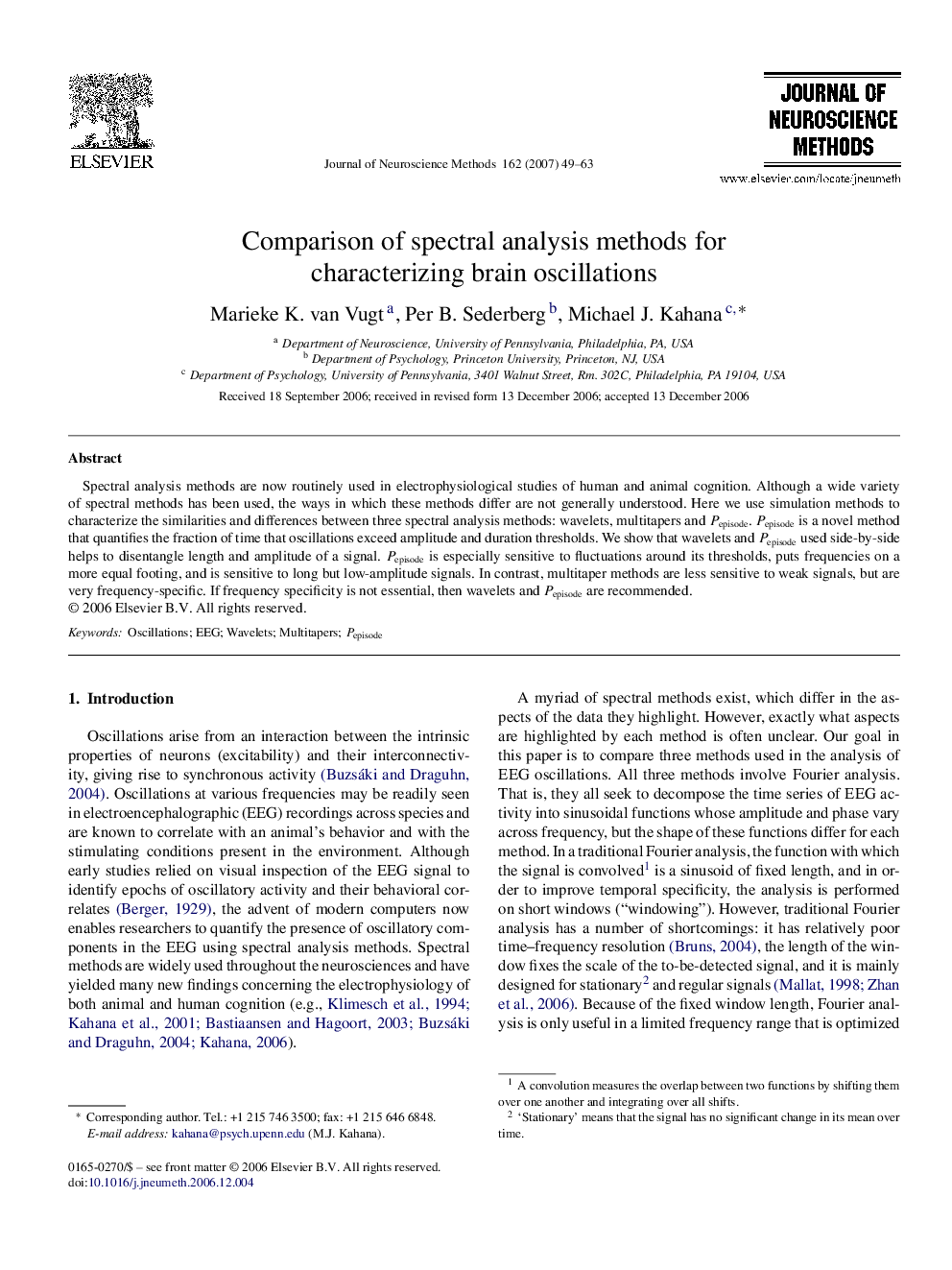| کد مقاله | کد نشریه | سال انتشار | مقاله انگلیسی | نسخه تمام متن |
|---|---|---|---|---|
| 6270448 | 1614656 | 2007 | 15 صفحه PDF | دانلود رایگان |

Spectral analysis methods are now routinely used in electrophysiological studies of human and animal cognition. Although a wide variety of spectral methods has been used, the ways in which these methods differ are not generally understood. Here we use simulation methods to characterize the similarities and differences between three spectral analysis methods: wavelets, multitapers and Pepisode. Pepisode is a novel method that quantifies the fraction of time that oscillations exceed amplitude and duration thresholds. We show that wavelets and Pepisode used side-by-side helps to disentangle length and amplitude of a signal. Pepisode is especially sensitive to fluctuations around its thresholds, puts frequencies on a more equal footing, and is sensitive to long but low-amplitude signals. In contrast, multitaper methods are less sensitive to weak signals, but are very frequency-specific. If frequency specificity is not essential, then wavelets and Pepisode are recommended.
Journal: Journal of Neuroscience Methods - Volume 162, Issues 1â2, 15 May 2007, Pages 49-63